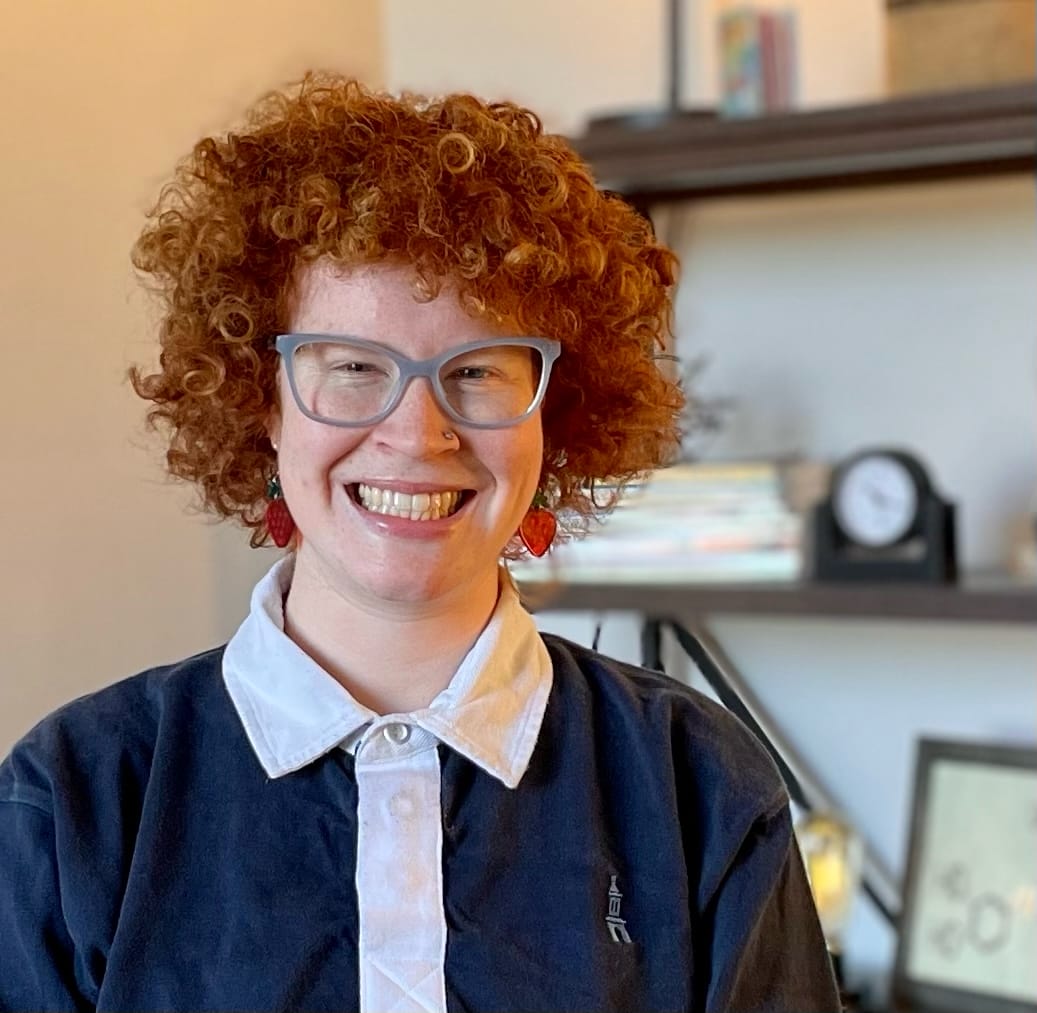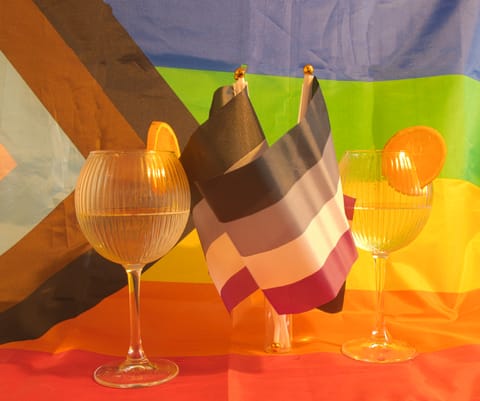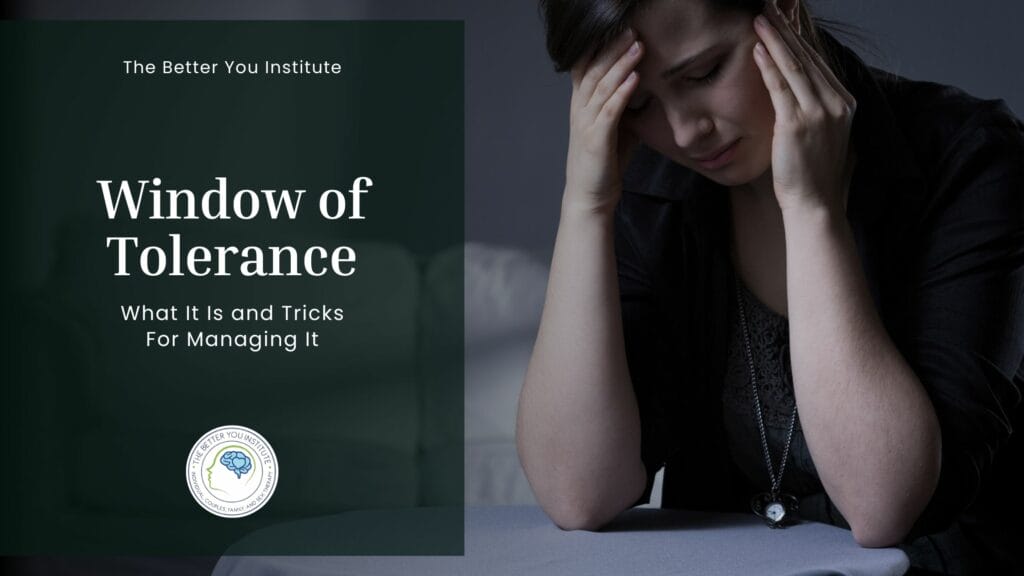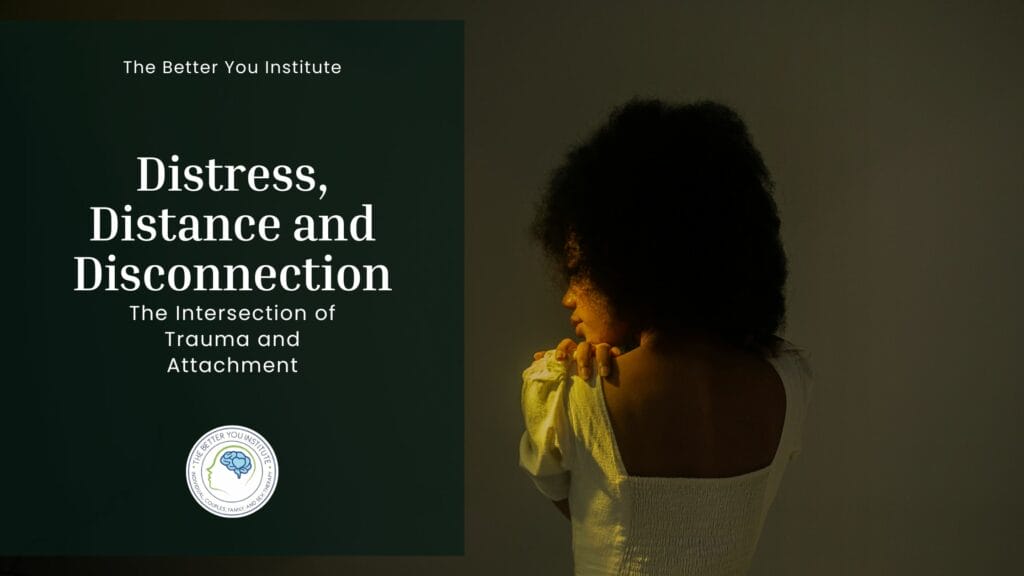What is Asexuality?

Asexuality is a sexual identity in which one experiences little to no sexual attraction to other people. Asexuality is a spectrum. Asexual is on one end, and allosexual is on the other, with “allosexual” referring to people who do experience sexual attraction. Several identities fall on the spectrum in between, such as graysexuality (only experiencing sexual attraction on rare occasions) and demisexuality (only experiencing sexual attraction when they have a strong emotional bond with a partner). Many individuals will refer to themselves as being “ace” or being on the “ace spectrum.”
What is not Asexuality?
To fully understand what asexuality is, it is equally important to understand what it is not. If someone identifies as asexual, that does not mean they experience no desire for romantic relationships. There are people who identify as asexual and aromantic (experiencing no romantic attraction), but they are two entirely different meanings. Asexual people just as often do experience romantic attraction and desire emotional intimacy and forms of physical intimacy that are not sexual. Asexuality is not remaining abstinent for religious reasons. It is not avoiding sexual interactions because of past traumas. It is not a form of sexual repression or a sexual dysfunction disorder. It is its own sexual identity with lots of nuance and variance.
History of Asexuality
Asexuality was brought more into the mainstream vernacular in recent years, mainly due to having more information about the identity being spread on the internet. Because it became more widely known via internet spheres, the identity is sometimes misrepresented as the first sexual orientation to have its “birth” occur in the media sphere. However, asexuality as a concept can be traced all the way back to the 19th century. The key difference here is that it was not called asexuality or even considered a sexuality at all. When asexuality was first discussed by German sexologist Magnus Hirschfield in 1896, it was discussed far more medically. At this time, asexuality was misrepresented as “sexual anesthesia,” essentially sexual frigidity. It wasn’t until a year later when German sexual reformist Emma Trosse first defined asexuality as something not abnormal nor unusual but rather as a valid identity deserving of respect and protection. So whilst the term may have been popularized largely in media spaces, it was coined much longer ago. That being said, the term has significantly evolved from being a cookie-cutter sexuality with only one meaning to its interpretation today as existing on more of a spectrum.
Misconceptions About Asexuality

In a 2020 survey of over 40,000 LGBTQIA+ youth done by the Trevor Project, 10% of participants identified as being on the ace spectrum, someone aligning with an identity falling under the umbrella of the “asexual” umbrella. However, asexual youth did report higher rates of depression and anxiety when compared to the overall sample. Though asexual people have a community all of their own, they are also part of the larger queer community. These rates of depression and anxiety are largely because asexual individuals can encounter prejudice from both the non-queer community and the queer community. Facing prejudice from within one of your own communities is a uniquely harmful experience, feeling outcasted by a group of people meant to welcome you.
There are people who have difficulty understanding or accepting asexuality because of the misconception that sexuality is an essential aspect of being human. The “Freud Effect” is a widespread misconstruction that our sex drive is the predominant incentive for human behavior. Sigmund Freud was an Austrian psychologist often cited as “The Father of Psychoanalysis.” Despite his profound influence on the practice of psychotherapy, many of his ideas are highly criticized today, particularly the way in which he tied almost every human thought and behavior, especially subconscious thoughts and behaviors, to sexual urges. Sex is certainly an important aspect for many people as a form of self-expression, intimate connection, or pleasure, but sex is only essential if you view it that way.
Some people also view asexuality as “unnatural,” despite asexuality occurring in other species, such as Komodo dragons, wasps, turkeys, and scorpions. Asexual people are sometimes met with a sense of pity, as allosexual people are curious as to how they have healthy relationships if they don’t have sex with their partner. However, asexual people can date, have sex, and have perfectly healthy relationships.
So Asexuals Never Have Sex?

A common question that comes up around asexuality is if they have sex or not. There are asexuals who are open to having sex, there are asexuals who are sex-repulsed, and there are asexuals falling somewhere between these two extremes. In a 2019 study done by researchers at the Kinsey Institute, 1,093 adults who identified as being on the ace spectrum were surveyed. 98% of asexuals and graysexuals, and 100% of demisexuals reported that they had engaged in sexual activity in the past, but only 4% of asexuals and graysexuals, and 11.5% of demisexuals reported that they had an interest in engaging in sexual activities in the future. To put it more succinctly, despite not having a lot of interest in sexual activity, a good deal of ace people indicate willingness or responsiveness to engage in sexual activities under specific conditions. It is also worth nothing that past behaviors do not predict future behaviors, and one should not make assumptions of past behaviors based on current behaviors.
Additionally, this same study indicated that most ace people view sex differently than allosexual people. For example, most ace people seem to view sex as any genital-based activity involving a partner, while allosexual people usually classify it as penetration. Traditional views of sex are very heteronormative, viewing the only “real” sex as penetrative. Each person’s definition of sex is unique to them. One person may consider cunnilingus as sex (not just oral sex), while another person may consider it sex whenever they reach orgasm with a partner by any means.
How Do I Know If I’m Asexual?
Since asexuality covers a large spectrum, people can sometimes experience difficulty trying to figure out if they align with this identity. Here are a few questions you could ask yourself if you believe you may be asexual:
- What does sexual attraction feel like for me?
- What emotions/physical reactions occur when considering having sex with someone?
- What would my ideal relationship look like in terms of physical intimacy?
- What would my ideal relationship look like in terms of emotional intimacy?
- Do I like the idea of sex?
- Do I like engaging in the physical act of sex?
- How do I define sex?
- Do I experience sexual attraction to people I don’t know well, such as celebrities, acquaintances, or strangers?
- Do I consider sex “important” to me in a relationship?
- Do I participate in sex but not necessarily desire it?
Your answers to these questions can help you come to terms with your conceptualization of sex and relationships. This conceptualization can help you come to terms with whatever identities you wish to align with. Pay attention to what you consider to be most important in your relationships. Keep in mind that asexuality is an umbrella that covers many more specified identities.
Examples of asexuality as an umbrella term are if you experience sexual attraction to those you are emotionally close with but not people you’ve only known for a bit or celebrities, you may be demisexual! If you experience sexual attraction and do enjoy sexual intimacy, but only rarely or sporadically, you may be graysexual! If you don’t desire to engage in sexual intimacy and you also don’t desire to engage in romantic relationships with others, you may be aromantic-asexual (aroace for short). For asexuality, like any other identity, one’s definition of their identity may be entirely unique from another’s, even if both of these individuals do identify as asexual. Try different labels and see what feels suitable for you, or simply remain unlabeled! How you communicate and align with your sexual or affectional orientation is entirely within your hands.
How Would One Facilitate an Allosexual-Asexual Relationship?
Asexual people will often seek out other asexual individuals to date. However, as mentioned earlier, many asexuals actively engage in healthy, happy relationships with allosexuals. The caveat is that these types of relationships require an enhanced level of open communication. It is important to be communicative from the early stages of a relationship. If an asexual waits until four months into a serious relationship with an allosexual to come out to them, this will inevitably create a rupture.
Table of Contents
Communication as a Form of Intimacy
Relationships between asexual and allosexual people foster a distinctive level of emotional intimacy because they need to communicate clearly about each other’s needs and boundaries. People’s opinions regarding sex aren’t necessarily the important part, but the way in which they communicate this to their partners is.
Here are a few ways you can start this conversation off:
- How frequently/often would you like to have sex?
- How do you define sex?
- How do you want to approach consent? (Ongoing? Explicit asking before everything? Safe word? Etc.)
- What are your favorite forms of intimacy? (Cuddling? Kissing? Spending quality time? Penetrative sex? Etc.)
- What do you need/want from me as a partner?
Be open and come out as asexual up front:
Coming out is never easy, but it can help strengthen your identity and relationships with others through vulnerability and trust, particularly with your romantic partners. Each partner must recognize that, in both cases, the sexual attraction their partner experiences is not a choice. Neither partner should attack or invalidate the other’s sexual identity. Maybe you explain your asexuality to your partner, and they are entirely okay with continuing a relationship where sexual intimacy is structured a bit differently or is not present at all. Maybe you explain your asexuality to a partner, and they are open to continuing a relationship but want to discuss specific terms. Or maybe you explain your asexuality to a partner, and they are not willing to continue a relationship. There is nothing wrong with admitting to yourself and your partner, respectfully, that it just isn’t going to work. Different people will have different sexual and romantic needs, and sometimes they just simply won’t align. However, not every coming-out story will result in a breakup. It could facilitate open discussions or even go over entirely smoothly. The only way to discover is to broach the topic with your partner.
Find ways to connect:
When asexuals and allosexuals date, they need to be highly communicative and determine each other’s needs in the realm of physical intimacy. It is helpful to identify different strategies for connection. Some ways to do so could be:
- Decide how often you are both willing to/need to engage in sexual intimacy
- Define what sexual intimacy is to each of you
- Discuss aspects of sexual intimacy that make the experience more enjoyable for both parties
- Come up with forms of physical intimacy that are not inherently sexual
- Have each of you define “sex” and identify the similarities or overlaps
- Consider ethical non-monogamy if your visions are quite different of what each of you needs regarding sex and sexual intimacy
Though there are many asexual people in relationships with allosexual people, the mismatch in sexual desire can inevitably lead to increased tension if partners do not communicate properly. It can be helpful to seek outside intervention from a couples therapist, especially one who may have an interest in sex therapy or in-depth knowledge of asexuality.
Practicing Asexual Allyship

Asexual advocacy is not just a role for people who are asexual themselves. Allosexual individuals can do a lot of good by practicing asexual allyship. Allyship involves advocating for the asexual community in a myriad of ways. Practicing allyship could look like:
- Making sure to include the “A” for asexuality when referring to the queer community (i.e., “LGBTQIA+” rather than “LGBT,” “LGBTQ,” or “Gay” community)
- Learning more about asexual experiences and how they vary (seeking out resources, fostering open discussions with community members, etc.)
- Approach asexual individuals with acceptance but without “othering” them
- Believe asexual individuals (e.g., if your asexual friend often tells you about them having sex with their partner, do not doubt their asexuality)
- Don’t ask intrusive questions
- Call out asexual erasure and ace-phobia when you see it
Though being an ally is a helpful act for non-asexual individuals, remember that you will never know “more” about the asexual experience than a member of the community. The best way to be an ally is not to lead the action for asexual acceptance but rather to act as an affirming support while community members take the reins.
Maybe you are slowly coming to terms with your asexuality. Maybe you are an allosexual first learning about the concept. Maybe you are half of an asexual-allosexual relationship, hoping to find a better way to foster communication. No matter your connection to asexuality, it is important to know what the identity is and how to stick up for the asexuals who are so often overlooked in both queer and non-queer communities.
If you want to learn more about asexuality or if you are asexual yourself, consider consulting the Asexual Visibility & Education Network at https://www.asexuality.org/. If you want to discuss asexuality more in-depth, consider calling us to collaborate with therapists that specialize in sex and sexuality. 267-495-4951
Meet The Author:

Keeghan McLane
Clinical Mental Health Counselor Intern
Keeghan McLane, a Clinical Mental Health Counselor Intern, is dedicated to normalizing therapy and reducing mental health stigma. Based in Philadelphia, they focus on serving a diverse client base, with a special interest in the LGBTQIA+ community. Keeghan employs Cognitive Behavioral Therapy and values building a strong, trusting counselor-client relationship. They hold a bachelor's degree in psychology from Temple University, graduating cum laude, and are currently pursuing a master's in clinical mental health counseling at Villanova University. Keeghan's future goals include becoming a Licensed Professional Counselor in Pennsylvania and a certified sex therapist, supported by their background in Gender, Sexuality, and Women's Studies.
Learn more about Keeghan McLane ⇒








